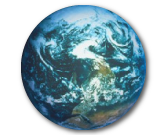Japan's Fukushima Nuclear Wastewater Release in the Pacific Ocean

The International Atomic Energy Agency has approved and is monitoring a slow discharge of radioactive cooling water in the Pacific Ocean from the damaged Fukushima nuclear power plant in Japan.
Immediately following the 2011 Tohoku earthquake of a magnitude of 9.1mw, a 15-meter tsunami disabled the power supply and cooling of three Fukushima Daiichi nuclear reactors, causing three cores to melt completely. The plant had been offline since the disaster but can no longer accomodate the resulting contaminated wastewater needed for cooling its fuel rods. The Japanese nuclear agencies developed a plan to release filtered nuclear cooling water into the Pacific Ocean over a regulated time-table. The contaminated water is processed to reduce concentrations of radionuclides except for one radioactive isotope of hydrogen called tritium that cannot be filtered out. "Tritium is an isotope of hydrogen, and hydrogen is part of the water itself (H20). So it is impossible to create a filter that could remove the tritium."1
According to Ministry of Economy, Trade and Industry (METI), "annual radiation levels from the release of the tritium-tainted water are estimated at between 0.052 and 0.62 microsieverts if it were disposed of at sea and 1.3 microsieverts if it were released into the atmosphere, compared with the 2100 microsieverts (2.1 mSv) that humans are naturally exposed to annually."2 The IAEA and the government of Japan have assessed the levels released to be safe enough for the environment however that assessment has not abated related political disagreements and cultural harrassments from neighboring countries.
Japan, trying to prevent another disaster of overflowing untreated contaminated material, is mitigating the risks involved to dispose treated water to make room for more unfiltered wasterwater. Considering their own economy and health are at risk, Japan took a decade to develop a technical process to disperse the water over decades so as not harm the environment. The IAEA and other international nuclear agencies are providing oversight to monitor release of tritium into the ocean will have minimal impact to the ecosystem and consequently may impart diplomacy with environmental concerns from all countries.
Footnotes:
(1) https://world-nuclear.org/information-library/safety-and-security/safety...
(2) https://world-nuclear.org/information-library/safety-and-security/safety...
References:
https://world-nuclear.org/information-library/safety-and-security/safety...
https://www.npr.org/2023/08/24/1195419846/fukushima-radioactive-water-japan
Images: Image composed by WJ (courtesy of zumwinkle.com)
Background image: Underwater photo of coral reef.jpg
Jerry Reid, U.S. Fish and Wildlife Service, Public domain, via Wikimedia Commons
Japanese flag: War flag of the Imperial Japanese Army.svg
Thommy, Public domain, via Wikimedia Commons
